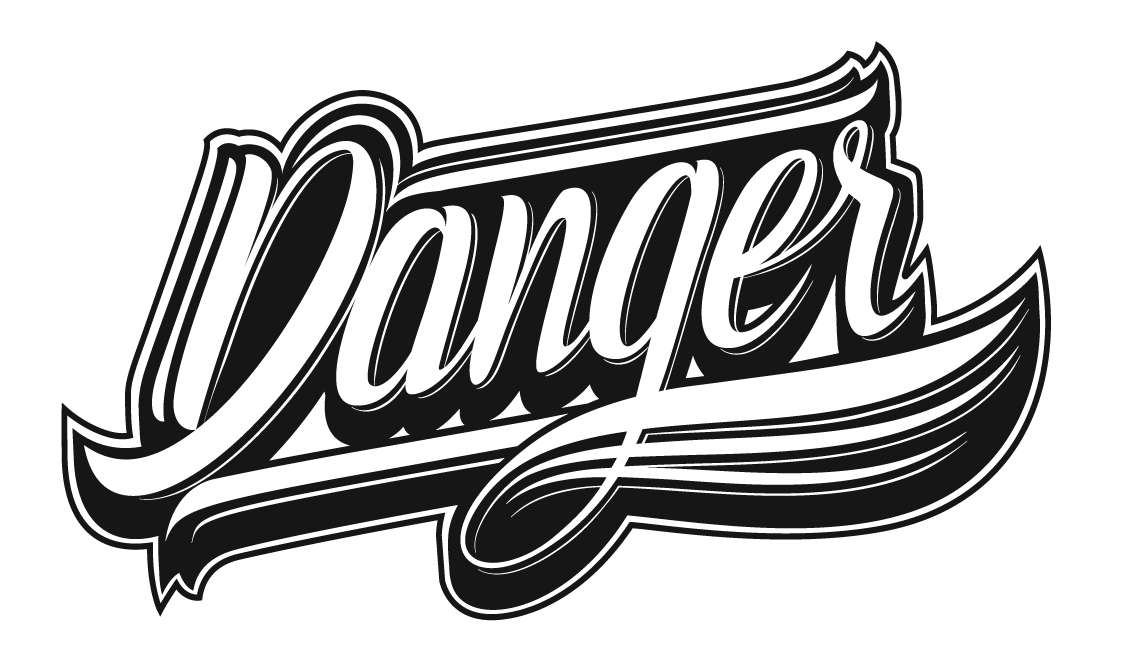
Protection
meets
Design.
Protection
meets
Design.
Designs are more than just beautiful surfaces – they are the expression of your creativity! Let us help you protect and defend your unique designs and safeguard them against copying. So you can concentrate on what you do best: Designing!
Lawyers for design law
Design law protects the aesthetic appearance of a product, i.e. the external design. It concerns the shape, color, structure and combination of features that characterize the design of a product. In many countries, design law is an intellectual property right that protects the owner against imitations and grants him exclusive rights to use his design.
However, design protection is only valid for the respective country or a group of countries. It is therefore necessary to register the designs in the countries in which protection is sought. The design law revised in the course of the EU reform offers suitable options for obtaining comprehensive protection.
Design law protects the aesthetic appearance of your products and thus ensures competitiveness by offering exclusive protection against imitation and unauthorized use.
Flanking or stand-alone
Comprehensive protection for your product design: Design law ideally complements trademark law by offering additional protection for the aesthetic appearance of a product, which is only covered to a limited extent by trademark protection. While trademark law is primarily aimed at protecting signs, names and logos, design law protects the visual appearance of a product – from shape and color to patterns and surface textures. This protective effect is particularly important, as the external design of a product is often a decisive component of brand identity and recognition.
While a registered trademark protects the name or logo of a brand, design law ensures that the visual design of a product is protected against imitation. This means that even if a competitor does not copy the trademark itself, they may still be able to imitate a product’s distinctive design features. This is where design law comes into play: it prevents the unique design elements that make up a trademark from being used by others without consent.
Designs of all kinds enjoy protection, regardless of whether they are everyday objects, lifestyle products or pure art. For example, the design of a drill can be just as worthy of protection as fashion items, electronic devices or a two-dimensional drawing.
Requirements for the protection of designs
A design is the two-dimensional or three-dimensional appearance of an entire product or a part thereof, resulting in particular from the characteristics of the lines, contours, colors, shape, surface structure or materials of the product itself or its ornamentation.
To be eligible for protection, the design must be new and have individual character .
When is a design new?
Since the reform of design law, the requirement of novelty has been legally defined directly in the Design Act. A design is considered new if no identical design has been disclosed before the filing date. Designs are considered identical if their features differ only in insignificant details.
Specifically, this means: It must not be part of the so-called “body of designs” that is already known prior to the application. A design is deemed to be disclosed if it is presented to the public in such a way that the specialist circles of the relevant industry in the European Union have had the opportunity to take note of it. This can take the form of announcements, exhibitions, commercial use or other means. Even publications outside the European Union – for example at international trade fairs in China or the USA – can affect the novelty of the design.
The grace period
The grace period enables the designer of a design to assess its market success. An application for registration of the design can be filed up to one year after its first disclosure by the designer, without this being prevented by the publication of the design. It should be noted, however, that the disclosure can also be triggered by a third party as a result of information or actions by the designer.
When does a design have the necessary individual character?
A design has individual character if the overall impression it produces on the informed user differs from the overall impression produced on that user by another design disclosed before the filing date. When assessing individual character, the degree of creative freedom of the designer in developing the design is taken into account.
In concrete terms, this means When assessing the individual character of a design, the overall impression it conveys is taken into account. This must stand out from the overall impression of other designs that were made public before the filing or priority date. A key factor is the designer’s creative freedom: the greater this freedom, the more clearly the design must differ from existing designs. The number of similar designs in the relevant field is also taken into account, as in such cases the requirements for the degree of distinctiveness may tend to be lower.
Degree of design freedom
The degree of creative freedom of the designer plays a decisive role in the design. This freedom can be limited, for example, if many similar designs already exist in the respective area. If the freedom to design is limited, the requirements for the degree of differentiation can decrease. This means that a design can be considered independent even if it differs only slightly from existing designs.
How protection is created
Design protection is obtained by registering the design with the relevant office. This is usually done at the German Patent and Trademark Office (DPMA) or via the European Union Intellectual Property Office (EUIPO) as a so-called Community design (in future EU design) for Europe-wide protection. The term “design” is a less commonly used term, but it has the same content as a design.
It is also possible to obtain international protection under the Hague Design Agreement (HMA) by registering a design in an international register. This is done by filing an application with the International Bureau of the World Intellectual Property Organization (WIPO).
The maximum term of protection for registered designs (DPMA) and registered EU designs (EUIPO) is 25 years. A so-called maintenance fee is payable every five years to maintain protection.
There is also the unregistered Community design. This offers automatic but time-limited design protection throughout the EU without the need for registration.
Advice from a law firm is particularly useful as the design is a so-called unexamined property right. This means that the office does not check the two protection requirements of novelty and individual character of the design when the application is filed. Without professional support, errors can be made in the application that jeopardize legal protection.
Info box
What is a
unregistered
Design patent?
The unregistered Community design offers automatic but time-limited design protection throughout the EU without registration. It is particularly relevant for products with short market cycles, for example in the fashion industry.
Recommendation:
Registration is preferable for important designs with longer-term significance. The unregistered design is suitable as a supplement or for designs with short-term market relevance.
- Key features:
- Term of protection: 3 years from first publication in the EU
- Automatic protection without registration and fees
- Requirements for protection: Novelty and individual character as with a registered design
- Creation of protection through verifiable first-time publication in the EU
- Only protection against imitation (copies), not against independent parallel developments
- Burden of proof for creation and ownership lies with the rights holder
- Main differences to the registered design:
- Shorter term of protection (3 years instead of max. 25 years)
- No proof of ownership available in the register
- Narrower scope of protection (only against copies)
- No registration costs, but higher documentation requirements
- More difficult enforcement due to burden of proof for the creation of property rights
When is there an infringement of a design?
An infringement of a registered design occurs if someone uses it without the consent of the right holder. The use includes the manufacture, offering, placing on the market, import, export, use of a product in which the registered design is incorporated or in which it is used, and the possession of such a product for the aforementioned purposes.
Specific acts of infringement can be diverse and include the following examples:
- Import of a lamp with a protected design from China for display in a store
- Production of a copy of a protected designer handbag and sale at a weekly market
- Presentation of a car with a protected wheel design at a car show
- Upload a video of a product with a protected design
and promote it on YouTube - Production of a smartwatch with a display design that is very similar to a
protected design - Use of a protected handle of a tool in
a separate product - Separate import of individual parts of a toy with
protected design for assembly on site
We are here to
advise you on
Design right!

Our expertise in design law
Design law is complex, international and subject to constant changes and developments in case law. This requires experienced lawyers and knowledge of current case law and legal changes in the relevant countries and areas.
In the field of design law, we have a team of highly specialized experts and lawyers with many years of experience in advising, registering and defending design rights in Germany and abroad and in enforcing and defending design law claims. Thanks to our international network of colleagues in design law in many countries around the world, we can support and enforce our clients’ design rights worldwide.
Our services include, for example
- Strategic advice on design protection
- Registration, monitoring and management of design rights worldwide
- Representation in disputes and proceedings before the patent and trademark offices
- Drafting of design law contracts and agreements, e.g. license agreements
- Enforcement of design law claims for rights holders against infringers
- Defense against unjustified warnings, temporary injunctions and legal action
- Implementation of customs seizure procedures in the fight against product and brand piracy
We represent our clients in design law nationwide before all German courts and the DPMA, as well as before the EUIPO and the courts of the EU, and before the IPI and the WIPO. We also represent our clients worldwide before courts and patent and trademark offices through colleagues from our international network.
Received a cease and desist letter?
How to react
You are best advised to
cease and desist letter!
A cease and desist letter, e.g. for infringement of competition law, industrial property rights or copyright, should always be taken seriously, as it can have considerable legal and financial consequences.
Timely and professional advice is crucial in order to minimize risks and develop the right strategy.
- Check cease and desist letter: Have the cease and desist letter legally checked. Not every cease and desist letter is justified, formally correct and abusive cease and desist letters are unlawful.
- Observe the deadline: Be sure to respond within the set deadline to avoid further legal action such as an injunction or a lawsuit.
- Check the cease-and-desist declaration: Do not sign a pre-formulated cease-and-desist declaration without legal advice. It could be too far-reaching and lead to considerable and lasting disadvantages. Once a cease-and-desist declaration has been signed, it is almost impossible to get rid of it and can result in considerable follow-up costs in the form of high contractual penalties.
- Strategy: Regardless of whether the cease and desist letter is justified or not, you should consider the right strategy for responding to the cease and desist letter with professional support. Many aspects play a role here. For example, there may be formal errors or the submission of a cease-and-desist declaration may involve incalculable risks.
Our team
in design law
Our team
in design law
Significant laws in the
design law
Significant laws in the
design law
Frequent
Questions About the
Design-law.
Frequent
Questions About the
Design-law.
What is a design in the legal sense?
A design (formerly: registered design) refers to the two-dimensional or three-dimensional appearance of a product or part thereof. The relevant aspects include lines, contours, colors, shape, surface structure and/or materials of the product itself or its ornamentation.
What requirements must be met for design protection?
For effective design protection, the design must.
- Being new: No identical design may have been disclosed before the filing date.
- possess individual character: The overall impression of the design must be different from that of other designs disclosed before the filing date.
- Have no grounds for exclusion: Designs that are solely due to technical function or are contrary to public order or morality are excluded from protection.
How can a design be protected?
There are two main paths for Germany and the EU.
- National protection: Application to the German Patent and Trademark Office (DPMA) for protection in Germany.
- European protection: Application to the EUIPO for a registered Community design with protection in all EU member states.
Alternatively, the first disclosure of a design in the EU automatically creates an unregistered Community design with a term of protection of three years.
What options are there for protecting a design internationally?
The following options are available for international design protection:
- Hague Agreement: Under the Hague Agreement Concerning the International Registration of Industrial Designs, a design can be registered centrally with the World Intellectual Property Organization (WIPO) in order to obtain protection in several contracting states.
- Individual applications: Direct filing in the respective countries in which protection is sought.
The choice of protection strategy depends on the target markets and the respective national protection requirements.
How long is a design protected?
- Registered design: The term of protection is five years from the filing date and can be extended to a maximum of 25 years.
- Unregistered EU design: The term of protection is three years from the date of first disclosure in the EU.
What is the difference between a registered and an unregistered design?
- Registered design: Offers comprehensive protection against the use of identical and similar designs and enables legally secure enforcement.
- Unregistered design: Protects only against imitation of the design and requires proof of individual character and imitation in the event of a dispute.
Is there a grace period for designs?
Yes, if the designer or his legal successor has disclosed the design himself within twelve months before the filing date, the design is still considered new. This grace period makes it possible to apply for a design within this period despite prior disclosure.
What laws does the owner of a registered design have?
The owner is entitled to prohibit third parties from using the design without his consent, in particular with regard to the manufacture, offer, distribution, import and export of products embodying the design. The design may also be prohibited from being used in advertising or in digital media. These laws apply to both registered national designs and registered Community designs.
How does the application process for a design work?
The application is filed with the DPMA or EUIPO and includes
- Submission of an application with reproduction of the design (e.g. photos or drawings).
- Indication of the product name and classification according to the Locarno classification.
- Payment of the registration fee.
After formal examination, the design is registered and published. The Office does not carry out a substantive examination for novelty and individual character.
What is a design erasure procedure and when can it be initiated?
Design cancellation proceedings are used to retrospectively review the protectability of a registered design. It can be initiated if.
- the design is not new or has no individual character,
- the design owner is not entitled (e.g. in the case of unlawful extraction),
- the design violates legal regulations (e.g. technical functionality, public order).
The request for cancellation can be filed with the DPMA or EUIPO.











